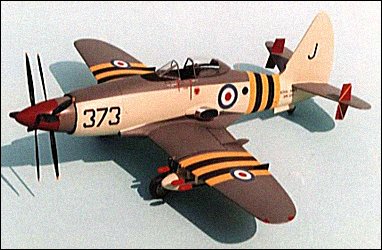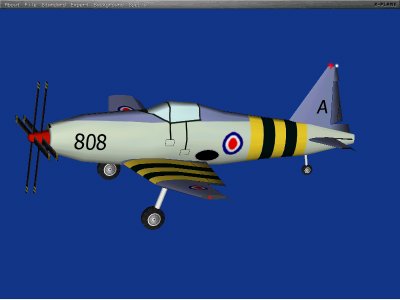

 |
 |
The Wyvern began life with specification N.11/44, issued in November 1944; this called for a fighter with a Rolls-Royce Eagle piston engine, but capable of accepting a turboprop; carrier-capable and armed with four 20-mm cannon, eight rockets, and three 450 kg bombs, a 825 kg mine or a 20-in torpedo. The RAF thought about ordering the same aircraft as a land-based escort fighter for some time, but abandoned it in favour of jet fighters.
First flight was made by TS371 on 12 December 1946, flown by Harold Penrose. It was followed by five other prototypes and ten Wyvern TF.1 pre-series aircraft. Except the first prototype all were fitted with ejection seats. They immediately began to build a bad record, with numerous emergencies and two complete groundings; problems with engine and propeller seem to have been responsible for most of them. The Eagle-engined version was soon abandoned in favour of the turboprop-engined developments.
Four converted and 87 new-built aircraft were delivered of the most important Wyvern version, the TF.4, later renamed S.4. The TF.4 had numerous small changes. The recognition characteristic was the cut-off engine inlet, the propeller spinner then protruding much further forward. Small rectangular fins were added to the tailplane, changes were made to the ailerons, Martin-Baker Mk. 2B ejection seats were installed, and the cockpit was reinforced. Later modifications included perforated dive brakes, a flat windscreen, and provisions for tip tanks.
The Wyvern entered service with 813 Sqn in May 1953, replacing the Firebrand. 813 Sqn was based later on the Eagle and the Albion. Other Wyvern units were 827, 830 and 831. In November 1956 the 830 and 831 Squadron took part in the Suez campaign. Only 830 seems to have made combat flights, losing 2 aircraft in 79 sorties. In March 1958 the last Wyvern unit, 813, was disbanded. Total Wyvern production had been 127.
Specification of Wyvern S.4
Powerplant:
2736 kW + 536 kg Armstrong Siddeley Python 3.
Dimensions:
Span 13.42 m (wings folded 6.1m), length 12.88 m, height 4.57 m (wings folded 5.11m).
Weights:
Empty 1080 kg, maximum take-off 11113 kg.
Performance:
Maximum speed 708 km/h (616 km/h at low altitude), initial climb 2130 m/min, operational ceiling 8535 m, ferry range +1445 km.
Armament:
Four Hispano Mk. 5 20-mm cannon, 907 kg bombload and 16 rockets.
The latest version 1.2 includes more fuselage reshaping and some more graphic touchups.
Download the Wyvern version 1.2


| Email James Z Temple | Return to Home Page |